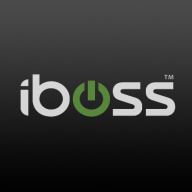


Microsoft Defender for Cloud Apps and Prisma Access by Palo Alto Networks both compete in the cloud security space, providing solutions for visibility and threat detection. Microsoft Defender holds an edge due to its strong integration within the Microsoft ecosystem and ease of management, whereas Prisma Access is praised for its comprehensive security features and zero-trust architecture.
Features: Microsoft Defender for Cloud Apps is known for its seamless integration with Microsoft platforms, advanced threat detection capabilities, and effective visibility across cloud environments. It integrates well with third-party applications and provides robust anti-spam features. Prisma Access offers zero-trust architecture, secure access to cloud services, and advanced threat detection. It incorporates machine learning and provides enhanced security controls, making it highly scalable.
Room for Improvement: Microsoft Defender for Cloud Apps could improve in areas like pricing, integration with Apple products, and reporting times. Users report challenges with false positives and integration with macOS. Prisma Access is critiqued for its complexity, pricing, and the need for stronger third-party integrations. It could benefit from improved multi-cloud support and more responsive customer service.
Ease of Deployment and Customer Service: Microsoft Defender for Cloud Apps is praised for its ease of deployment in public and hybrid clouds, with good technical support, though dependent on the support contract. Prisma Access is used in diverse environments but faces challenges with initial troubleshooting and technical support responsiveness. Both products have potential for improving their customer service to enhance user experience.
Pricing and ROI: Microsoft Defender for Cloud Apps is cost-effective when bundled with Microsoft 365 E3 or E5 licenses, making it an attractive option for enterprises within the Microsoft ecosystem. Prisma Access, considered expensive, offers significant security benefits that justify the investment, although some users encounter difficulties with price negotiations. Both products provide notable returns on security and compliance.
| Product | Market Share (%) |
|---|---|
| Prisma Access by Palo Alto Networks | 15.8% |
| Microsoft Defender for Cloud Apps | 7.9% |
| iboss | 2.1% |
| Other | 74.19999999999999% |



| Company Size | Count |
|---|---|
| Small Business | 6 |
| Midsize Enterprise | 6 |
| Large Enterprise | 5 |
| Company Size | Count |
|---|---|
| Small Business | 13 |
| Midsize Enterprise | 10 |
| Large Enterprise | 19 |
| Company Size | Count |
|---|---|
| Small Business | 23 |
| Midsize Enterprise | 21 |
| Large Enterprise | 27 |
Iboss offers a comprehensive cloud-based security platform valued for its scalability and autonomous features, ensuring robust security with easy deployment and management capabilities.
Renowned for its robust security architecture, Iboss integrates seamlessly within diverse networks, delivering efficient granular filtering and advanced content categorization. Its single pane of glass console provides ease of management, allowing rapid scalability suitable for rapidly deploying environments. Operates in BYOD setups due to inline filtering without device installation. Integration with cloud-based applications enhances user control, and features like SASE, SSL inspection, and ChatGPT risk protection stand as highlights. Despite its strengths, users have pointed out areas for enhancement like direct navigation in reports, SSL decryption, and better cloud integration while having room to improve data loss prevention.
What are the most important features of Iboss?The usage of Iboss spans educational institutions, specifically K-12, to enforce internet policies, protect data, and support remote work environments. It provides web filtering and security frameworks to ensure safe browsing. Its platform-as-a-service model offers flexibility for both cloud-based and on-premises requirements, integrating seamlessly to deliver enhanced security features suitable for various deployment needs including zero trust, CASB, and network security for work-from-home setups.
Microsoft Defender for Cloud Apps is a comprehensive security solution that provides protection for cloud-based applications and services. It offers real-time threat detection and response, as well as advanced analytics and reporting capabilities. With Defender for Cloud Apps, organizations can ensure the security of their cloud environments and safeguard against cyber threats. Whether you're running SaaS applications, IaaS workloads, or PaaS services, Microsoft Defender for Cloud Apps can help you secure your cloud environment and protect your business from cyber threats.
Reviews from Real Users
Ram-Krish, Cloud Security & Governance at a financial services firm, says that Microsoft Defender for Cloud Apps "Integrates well and helps us in protecting sensitive information, but takes time to scan and apply the policies and cannot detect everything we need".
PeerSpot user, Senior Cloud & Security Consultant at a tech services, writes that Microsoft Defender for Cloud Apps "Great for monitoring user activity and protecting data while integrating well with other applications".
Simon Burgess,Infrastructure Engineer at SBITSC, states that Microsoft Defender for Cloud Apps is "A fluid, intelligent product for great visibility, centralized management, and increased uptime".
Prisma Access by Palo Alto Networks provides consistent security for all users and applications across your remote networks. Prisma Access grants users safe access to the cloud and data center applications and the internet as well. In addition, the solution combines all of your security and networking capabilities into a single cloud-delivered platform, enabling flexible hybrid workforces.
Prisma Access can be managed two ways:
Prisma Access delivers both networking and security services, including:
Prisma Access by Palo Alto Networks Features
Prisma Access by Palo Alto Networks has many valuable key features including: App-ID, User-ID, Device-ID, SSL Decryption, Dynamic User Group (DUG) Monitoring, AI/ML-Based Detection, IoT Security, Reporting, URL Filtering, Enterprise Data Loss Prevention (DLP), Digital Experience Monitoring (DEM)*, Logging, Policy Automation, Intrusion Prevention System (IPS), and many more.
Prisma Access by Palo Alto Networks Benefits
Some of the benefits of using Prisma Access by Palo Alto Networks include:
Reviews from Real Users
Below are some reviews and helpful feedback written by Microsoft Azure Synapse Analytics
users who are currently using the solution.
PeerSpot user Partha D., Global Network Tech Lead at a computer software company, speaks about his experience using the product, saying, "It protects all app traffic so that users can gain access to all apps. Unlike other solutions that only work from ports 80 and 443, which are predominantly for web traffic, Prisma Access covers all protocols and works on all traffic patterns... The most sophisticated attacks can arise from sources that are not behind 80/443."
Tejas J., a Sr. Cloud Security Architect at a computer software company, mentions that "it is geographically dispersed, and it sits on top of Google and AWS platforms. Therefore, you don't face the standard issues, such as latency or bandwidth issues, that you usually face in the case of on-prem data centers.”
Another PeerSpot reviewer, Max I., Associate Director at Cognizant, comments that "Security is absolutely spot-on, really top-notch. It's the result of all the components that come together, such as the HIP [Host Information Profile] and components like Forcepoint, providing end-user content inspection, and antivirus. It incorporates DLP features and that's fantastic because Prisma Access makes sure that all of the essential prerequisites are in place before a user can log in or can be tunneled into."
We monitor all Cloud Access Security Brokers (CASB) reviews to prevent fraudulent reviews and keep review quality high. We do not post reviews by company employees or direct competitors. We validate each review for authenticity via cross-reference with LinkedIn, and personal follow-up with the reviewer when necessary.